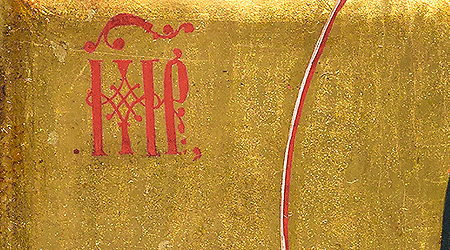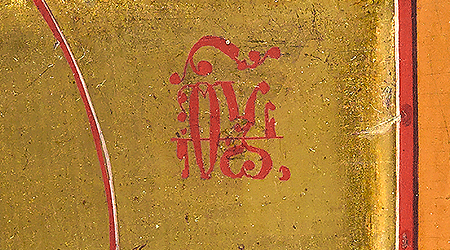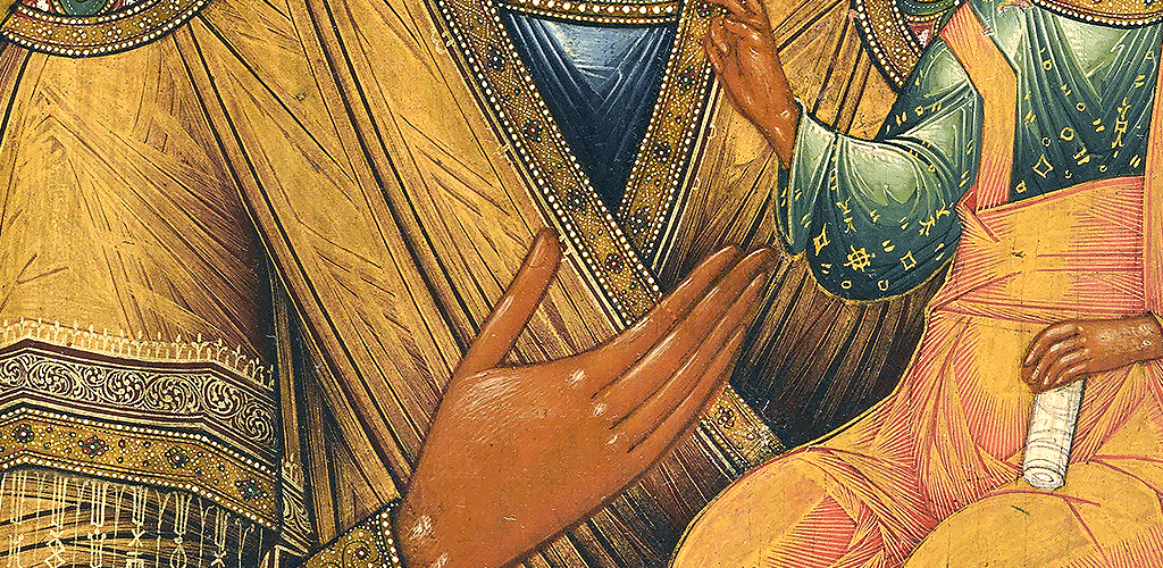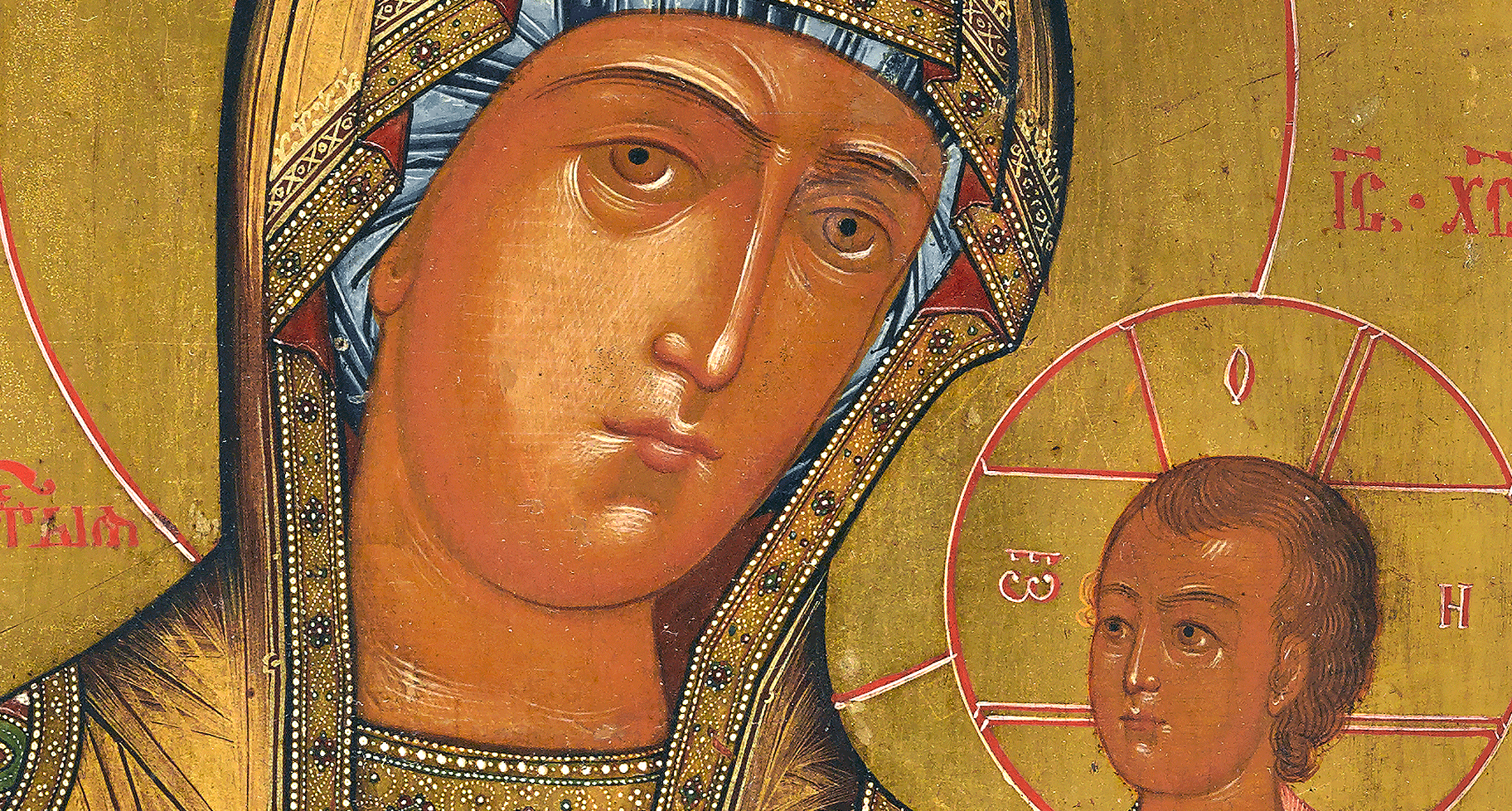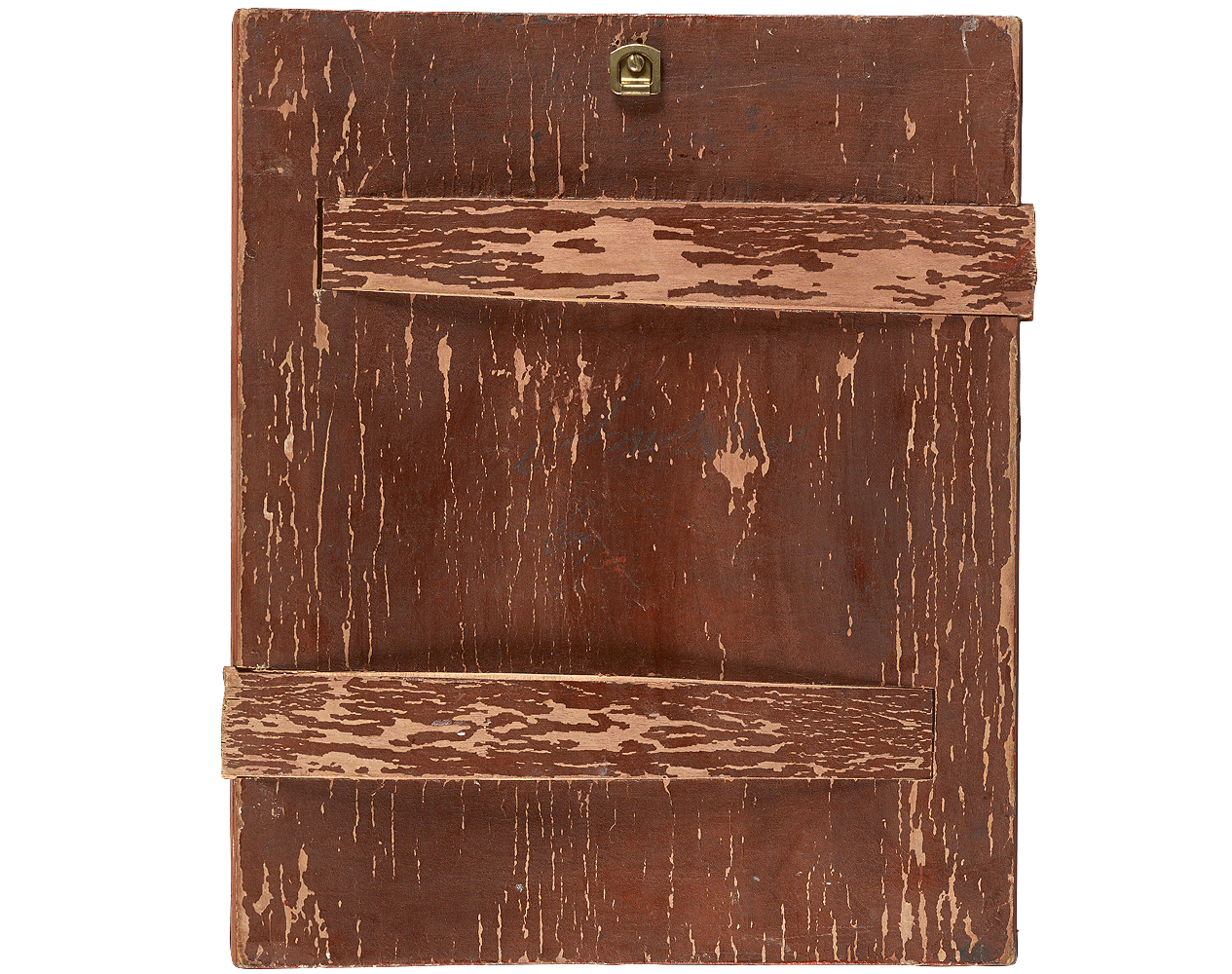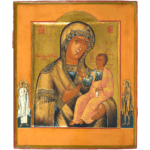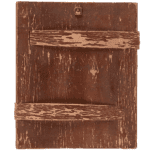Painted in warm, earthy colours in the traditional style, the icon portrays the Mother of God Iverskaya. The Mother of God and the Christ Child are depicted against a gold leaf background. The Virgin is shown bust-length, wearing a gold-embroidered maphorion with an azure blue lining, richly jewelled and with detailed tassels on the sleeves; with her left hand, she points towards her infant son, as a path of salvation. Seated on her left arm, dressed in a folded himation spangled with stars and holding a scroll in his left hand, a symbol of divine revelation, the Christ Child raises his right hand in a gesture of blessing. The outer border of the icon is painted with St Mary of Egypt and the Angel Guardian.
The original of this image is the ancient icon of the Mother of God Portaitissa (Greek Πορταΐτισσα, Gatekeeper) in the Georgian Iviron monastery on Mount Athos. The first mention of the icon dates back to the 9th century – the period of iconoclasm, when the veneration of religious images was forbidden and many icons destroyed. According to the Orthodox tradition, the image was at one time in the possession of a pious widow who lived near the city of Nicaea. Armed warriors broke into her house to destroy the icon; one of them hit the shrine with a spear, and the image started bleeding. The astonished warriors were in fear, while the widow, to save the image from destruction, cast it into the sea. The icon reached Mount Athos and was installed over the gates of the Church of the Mother of God of the Iviron monastery, thus receiving its name.
In Russia, the earliest copy of the Iveron icon appeared in 1648, when Archimandrite Nikon, the future Patriarch of Moscow, commissioned it to be painted by the Greek icon-painter Yamvlich and brought it to Moscow. Upon arrival, the image was enshrined in the newly built Iverskaya Chapel at the Resurrection Gate, near the Kremlin walls. From that time on, the icon became widely venerated in Russia, and numerous copies of the image were produced.
The current iconographic version of the Iveron Mother of God lacks a bleeding wound on the Virgin’s face, traditionally omitted by Russian icon painters. It also belongs to the abbreviated type without the images of twelve prophets around the central panel.
